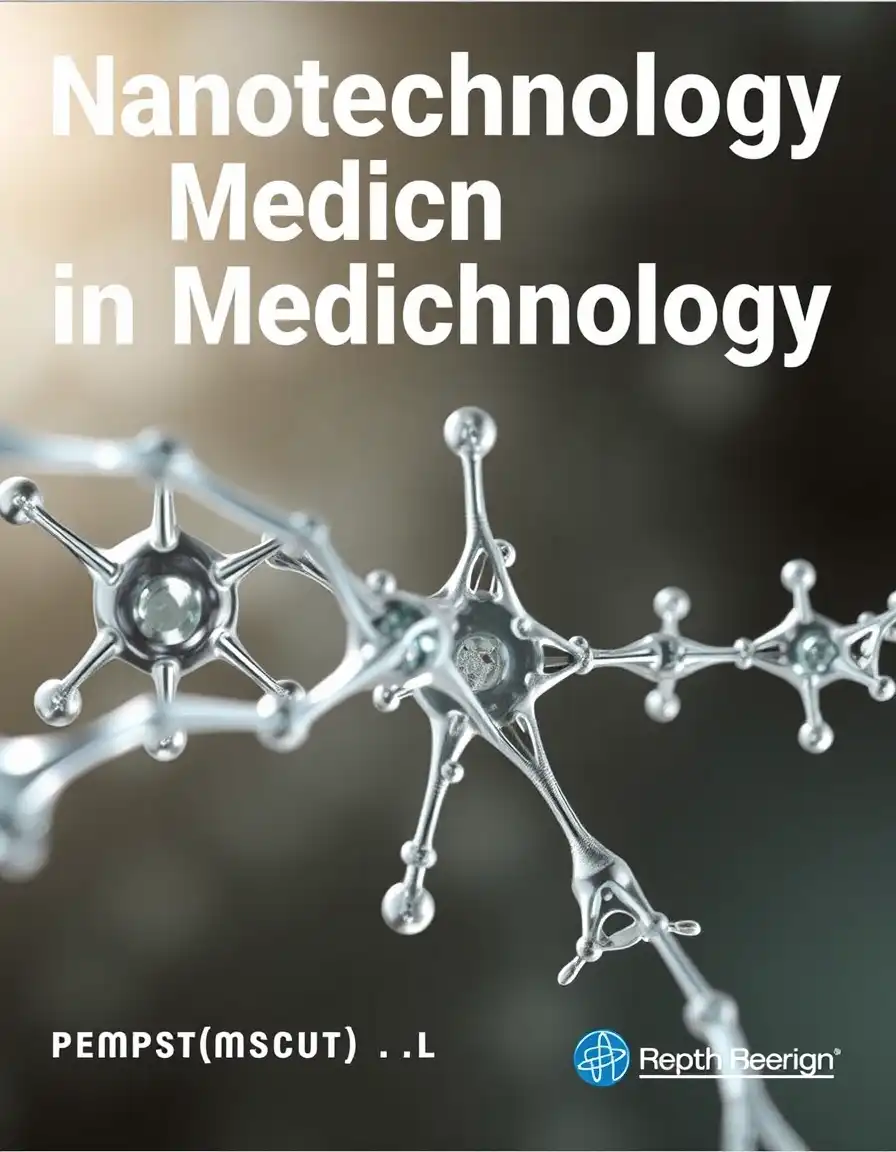Introduction:
Nanotechnology in medicine marks a revolutionary advancement that has renovated the methods used for disease detection, treatment and prevention. Acting at the nano level (1-100 nm), this new generation is able to manipulate matter at the molecular scale and it opens new solutions that were previously unheard of in the conventional healthcare system. This cross-fertilization, which is commonly referred to as nanomedicine, has opened the frontier of knowledge in the areas of accuracy medicine, drug delivery plate form, advanced diagnostics tool and regenerative medicine technique. Nanotechnology in healthcare history can be traced to the visionary speech of 1959 by Richard Feynman, who envisaged the possibility of manipulation of individual atoms titled, There is Plenty of Room at the Bottom. Subsequently, the discipline has experienced remarkable and positive progress, especially in the 21 st century and is now a mainstay of modern medical practice.
Significance and Benefits of Nanomedicine:
Nanotechnology’s influence in medicine is wide spread, providing notable enhancement over standard treatment protocols. Its capability to interrelate with cells and biomolecules at the same scale, they operate by enabling highly targeted therapeutic delivery and diagnostic technologies. Some of the key profits of nanotechnology in medicine contain:
- Targeted drug delivery: Nano carriers Facilitate drug delivery right to diseased tissues, increasing effectiveness although reducing adverse effects.
- Early disease detection: Nano-enabled biosensors and imaging agents identify diseases a like cancer at the onset of disease with higher diagnostic accuracy
- Minimally invasive procedures: Nano robots and nanoparticles allow actions that lessen patient injury and recovery duration.
- Improved vaccine development: Nano-vaccines boosted immunological responses and optimized delivery systems targeting remote communities
Therapeutic Applications
- One of the most significant applications of nanotechnology in healthcare originates from therapeutics, mainly in cancer treatment.
- Nanoparticles such as liposomes, polymeric nanoparticles, and gold Nano shells are modified to target and build up in tumors and administer chemotherapy agents precisely where they are desired. This targeted therapy decreases adverse systemic toxicity while enhancing therapeutic efficacy.
- In immunotherapy, Nano carriers enable direct administration of immune active compounds to immune cells, enhancing the body’s natural fortifications. Correspondingly, in infectious diseases, silver nanoparticles and Alternative nanomaterials with antimicrobial properties are being utilized to address antibiotic-resistant infections.
- Furthermore, nanomedicine is showing promising results in neurological disorders, where blood-brain barrier-penetrating nanoparticles enable targeted delivery of therapeutics to the brain, long considered a challenging site to access.
Diagnostic Applications and Nano Imaging:
- Detection of disease has been innovated by advanced diagnostic technologies that use nanotechnology. In bio imaging, plasmonic nanoparticles and quantum dots are necessary apparatuses that offer Real-time molecular tissue imaging. These devices have advanced optical or Fluorescent properties that let doctors Track pathological changes in real time or therapeutic efficacy.
Nano sensor-united lab-on-a-chip systems support quick diagnosis with little Biological specimens. Point-of-care testing has demonstrated improvement, which is chiefly essential in Rural or resource-limited areas.
>With the integration of Nano-biosensors into wearable diagnostics, patients are able to treat long-term underlying medical conditions through a repetitive and periodic screening of Key health metrics that include the heart rate, hydration, and glucose levels.
Regenerative Medicine and Tissue Engineering:
- By promoting tissue recovery and renewal, nanotechnology is converted into regenerative medicine. Nanostructured scaffolds encourage formation of tissue and growth of cells by Looks and functions like the body’s natural support matrix. These substances are repeatedly used in the Reconstruction of bone, skin, and nerves.
- New intelligent biomaterials can respond to Environmental signals like temperature or pH to facilitate tissue repair through responsive support mechanisms. Re-forming results are further upgraded by the fusion of growth factors into Nano carriers.
Nanorobotics and Neural Interfaces:
- Nanorobotics is an emergent field where nanobots do direct tasks in the body, such as transporting drugs or magnetic nanobots helping in small incision surgery.
- In neuroscience, technologies like Nanoelectronics and neural dust support direct collaboration with brain tissue for chronic monitoring and neural stimulation.
Nano-Vaccines and Immune Engineering:
Thermostable vaccines, made possible by current developments in Nano vaccine technology, eliminate the requirement for cold-chain logistics and permit mass vaccination in separated areas. These vaccines rely on self-assembling nanoparticles to disease-mimic informatvely presenting antigens, developing the immune system.In addition, Nanotechnology-based immune engineering has the prospect of leading to the possibility of single-dose vaccination against infections that traditionally require a series of a vaccine.
Safety, Challenges, and Regulation:
In spite of its significant promise, nanotechnology in medicine faces several challenges:
- Toxicity risks: Some nanomaterials may accidentally damage cells or activate immune responses.
- Scalability Issues: Generating unchanging, unvarying Nano-preparations at scale is puzzling.
- Lack of standardization: Uneven safety standards and rules obstruct clinical development.
- Biological unpredictability: Nanomaterial behavior in multifaceted biological systems is still difficult to forecast.
Conclusion:
With its advanced tools for accurate Precision diagnostics, effective treatments, and tissue-regenerative strategies nanotechnology in medicine has been forward-looking from idea to medical realism. Future healthcare systems could be entirely reshaped as an outcome of its integration with gene editing, wearable diagnostics, and artificial intelligence. In spite of ongoing difficulties, the answer to some of today’s most pressing medical challenges lies in the ongoing development of treatments that are not only safer and more effective, Nano medical techniques. Nanomedicine is composed to develop as a main constituent of modern and future medicine as investigation and guideline evolve concurrently.If you want to learn more for the Emergency Medical technology course click here

